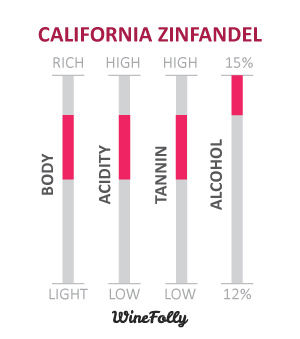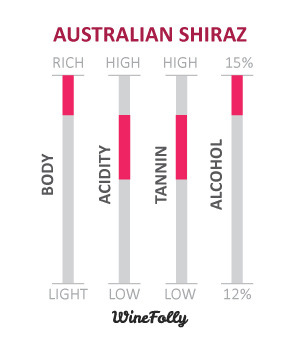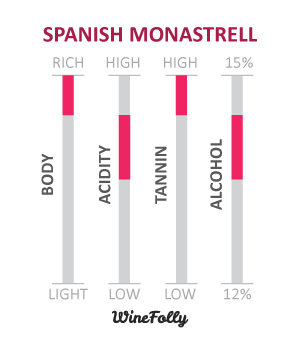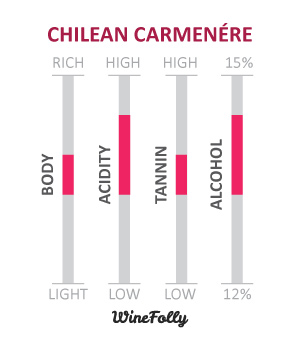There are 6 red wines that make the best red wines for beginners. Actually, there are many more. That said, six is the perfect number for a half-case.
Learn what Zinfandel, Petite Sirah, Shiraz, Carménère, Monastrell, and Garnacha have in common as examples of excellent wines to start your adventure into red wines.
It’s true, wine is an acquired taste and everyone’s taste is different. On top of this fact, wine gives off hundreds of aroma compounds that deliver hundreds of unique smells: from cherry sauce to old saddle leather.
So what are the best red wines to start your adventure into wine? The following wines are great to use as benchmarks for basic understanding. With over 1300 wine varieties, this is just the tip of the iceberg.
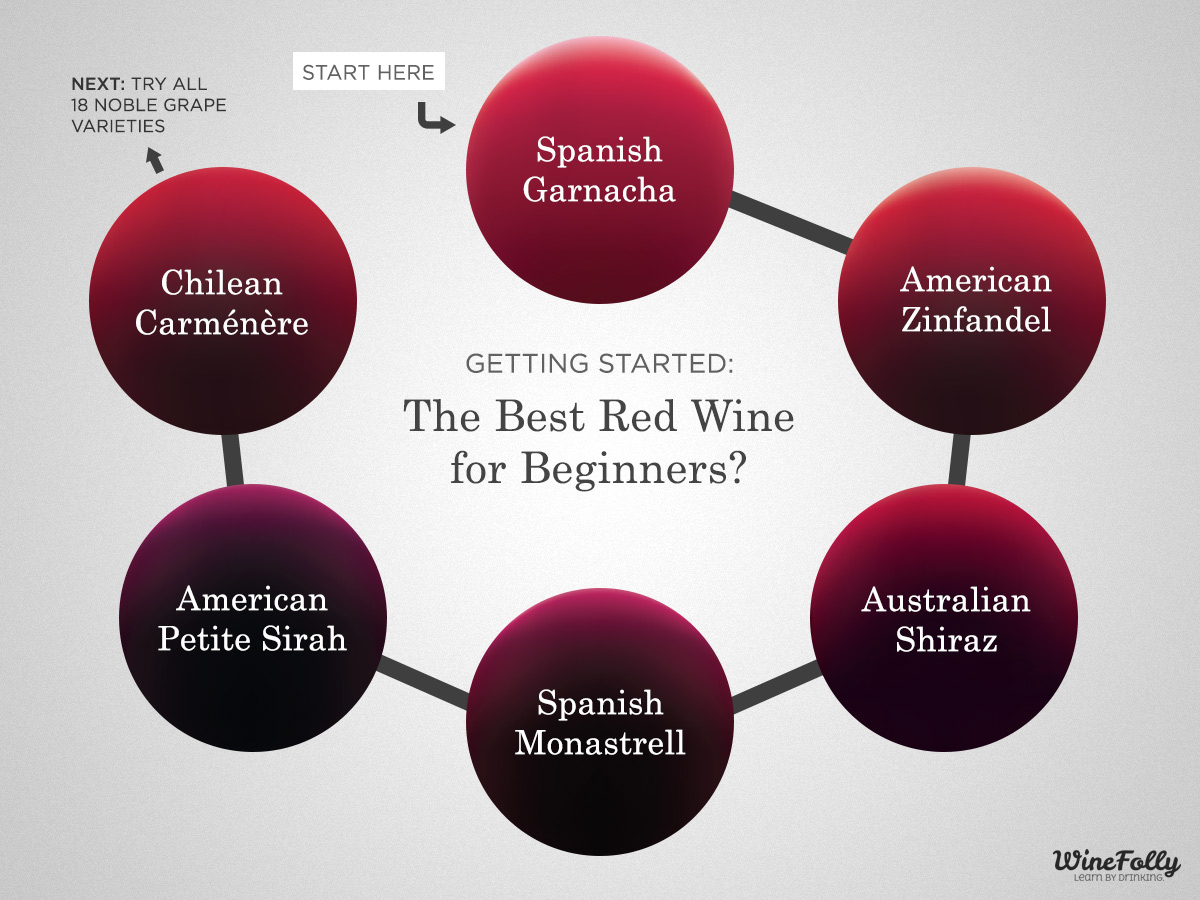
6 Red Wines To Explore Taste
These wines were selected for three reasons: they are bolder on the flavor intensity spectrum, they have easy-to-identify fruit flavors, and they can be found for less than $18.
- Garnacha (a.k.a. Grenache)
- Zinfandel (a.k.a. Primitivo)
- Shiraz (a.k.a. Syrah)
- Monastrell (a.k.a. Mourvédre)
- Petite Sirah
- Carménère
Why Varietal Wines Are Better for Learning
In the US, wineries can blend up to 25% of another grape variety into the wine. So if it says “Cabernet Sauvignon,” it can contain 25% other grapes in it (Merlot is a popular choice). This doesn’t just happen with Cab, it happens with other wines too. For example in California, Syrah is sometimes added to Pinot Noir for added color and richness.
Wine blends taste great but they are not that useful if you’re trying to learn. Try to find 100% single-varietal wines when expanding your wine palate.
Fortunately, the six wines mentioned here tend to be produced as 100% single-varietal wines.
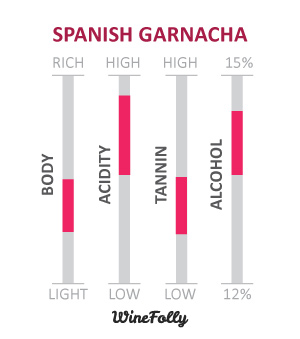
Spanish Garnacha (a.k.a. Grenache)
Look for notes of Raspberry, Candied Cherry and Orange
This wine is all about understanding how to taste acidity. Garnacha from Spain tends to have bright berry flavors and moderate acidity. It’s relatively easy to pick out the mouth-watering acidity because it’s often laced with citrus flavors (e.g. grapefruit or orange). A recent study at the Oenology Department at University of Bordeaux has shown that wines with higher acidity taste less tannic than wines with lower acidity. By the way, Garnacha is an incredibly important wine grape outside of the US. It’s grown primarily in Spain and Southern France where it is the major blending grape in Côtes du Rhône wines.
California Zinfandel
Look for notes of Raspberry, Chocolate and Cinnamon
Zinfandel will help you understand how alcohol affects flavor. Be sure to select a Zinfandel with about 15% ABV for this to work — and invite a buddy with you to help drink it. After you taste the wine, let out a deep sigh and you’ll feel the tingle of alcohol in the back of your throat. High alcohol wines (14%+) often have a ‘spice’ element to the taste and in the case of Zinfandel, it comes across as cinnamon and pepper. Alcohol not only adds a tingling sensation, it also adds the perception of body. Testing at Bordeaux University have shown that higher alcohol wines tend to reduce the perception of tannin in the taste (but not the aftertaste). You might notice this effect the next time you try Zinfandel.
South Australian Shiraz (a.k.a. Syrah)
Look for notes of Blackberry, Blueberry, Pepper and Coffee
Shiraz will help you understand what a full-bodied wine is all about. A few producers of Shiraz in Australia have moved towards a lighter style, but if you get a truly inky Shiraz, say from McLaren Vale or Barossa Valley, you’ll notice how boldly flavored a wine can get. Of course, there is a lot going on with the grapes and winemaking to create a wine this bold including heightened glycerol and sometimes just a touch of residual sugar. Australia is one of the few regions that consistently produces super-charged single-variety wines. When you taste one, focus on the profile and texture in your mouth.
Spanish Monastrell (a.k.a. Mourvédre)
Look for notes of Blackberry, Roasted Meats and Black Pepper
Monastrell will help you understand Old World wines, especially if you compare it to Shiraz. Monastrell is an abundant variety in Spain, but it is fairly unknown in the states. It makes a deep dark full-bodied wine with very rustic notes including tar, roasted meats and tobacco smoke. Earthy flavors are the hallmark of Old World wine and Spanish Monastrell offers great values for their lush bold red wines. Great examples can be found around Yecla in Spain
California Petite Sirah
Look for notes of Jam, Black Pepper and Cedar with high Tannin
Petite Sirah will help you understand what tannin is all about. Petite Sirah grapes are very small and because of this there’s more skins and seeds which are the source of tannin and color. Because of this, Petite Sirah tends to have high tannin. When you taste it, you’ll notice how the texture of tannin dries your mouth out and sits on your tongue (and sometimes teeth!). If this is something you like, you’ll find yourself attracted to other high tannin wines such as Nebbiolo and Tempranillo.
Chilean Carménère
Look for notes of Black Cherry, Clove, and Bell Pepper
Carménère will help you understand herbaceous or ‘green’ wines. No matter how cherry and plum flavored a Carménère wine tastes, there is always a subtle note of bell pepper in the mix. This aroma compound is called Pyrazine and it’s the source of the herby-grassy quality of many red and white wines including Cabernet Sauvignon, Cabernet Franc and Carménère. Despite its pleasing preference in the aforementioned wines, ‘green’ flavors are also associated with underripe grapes (from a poor vintage).

Explore further
Check out the wine 101 and learning guide for more interesting articles to get you started in wine. Definitely check out:
- The Basic Wine Guide (infographic)
- The 18 Noble Grapes Wine Challenge
- 9 Steps to Becoming a Wine Expert

